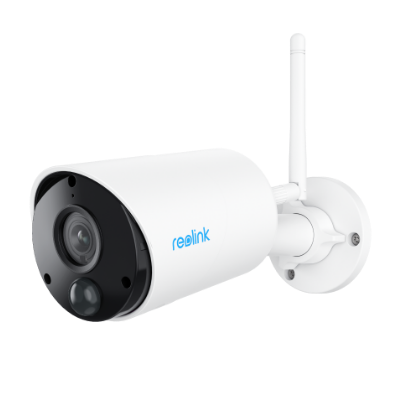Good morning!
I've bitten the bullet and bought a Reolink system. I went for the 4k system in the end. I'm mostly using turret cameras. Thanks for the advice!
I thought I'd fit them under the top roof soffits, but realised I'd just be filming the tops of intruders heads, so I'm going to fit them about 10ft up.
Reason for buying it is that I'm having work done on the house - in about a 8 weeks we're going to have external wall insulation fitted and rendered. So I thought I could hide the Cat6 cables under the EWI boards and render. I've a few questions - perhaps someone has solved some or all of these?
- I've read comments somewhere that the supplied network cables aren't very durable. Presumably I can use the supplied network cabling under the render?
I ordered individual cameras which only came with 20cm Cat6 cables (enough to plug in next to the poe switch/Poe NVR for setup/test). An all-in-one box may have longer, but I doubt they'll be outdoor rated.
I bought a 305m reel of full copper core, outdoor rated Cat6 for about £120 (but this was 4 years ago, so prices may well be higher). Avoid CCA if you have any long runs (50m+).
Cat5e is perfectly sufficient and cheaper (about £80 for 305m full copper core, outdoor rated stuff, from what I can see), but I wanted the future-proofing for higher resolution cameras and gigabit internet when it finally arrives.
- How do people feed all the cabling through the wall to the NVR? Do you drill a number of small holes for each cable or one massive hole?
I bought a 3 pack of 1m long 12mm, 16mm & 24mm SDS+ bits from Amazon (£33) and used my Dad's old Hilti.
When I first got the house, I only needed 3x Cat6 cables run outside (one to switch upstairs, 2 for front/rear external cameras), which fed snugly through the 16mm hole (duck taped together around a bit of paracord). When the drill bit broke through to the outside, I left it in the hole, detached it from the drill, then taped paracord to the tip as I pulled the bit back through the wall.
When I needed more outside cables, I drilled another hole next to the first (12mm as pilot, then the 24mm), doing the same paracord trick. This allowed me enough room to feed a piece of 22mm round plastic conduit through, which just about squeezed 5 more cables in.
I squeezed some silicon sealant in the holes and covered the outside with a brown BT cable entry cover (from Amazon) and a similar white one for inside.
- The turrets have a cable coming out the back, which has a female port for the cable. How would I tidy this up after the render has gone on? Do I need a junction box to hide the cable?
The cameras come with a weather resistant screw-in gromit that you feed over the end of the cable, before terminating it. You then connect the male to female, and twist the tight grommet up to meet the female end and seal it. I don't recommend trusting them though, as I've had to replace two cameras that got moisture inside (Reolink's warranty/aftersales support was excellent and replaced both cameras without a quibble).
I bought a pack of 5 round weatherproof junction boxes (65mm x 35mm) which are small enough to attach with a single screw, but have just enough room to sit the male/female connection, reset & power pigtail in, before snapping the cover on.
- Is there any point in installing SD cards into the cameras?
I did - 256Gb for the PTZ camera overlooking my parking spot (gives me 6 days-ish) and 128Gb (3½ days-ish) in the others. The Reolink app can be set to record constantly in up to 5m chunks, or activate on motion alert (can adjust trigger sensitivity, human/animal/vehicle).
The onboard SD cards mean I view footage remotely, almost instantly in medium resolution, take snapshots/small snippets of footage on my phone if needed.
I can then search the full 4k footage on my NVR that's set to constantly record the 24/7 feed, when I get home. 8Tb Skyhawk drive gives me a little over 3½ weeks of 24/7 footage.
- I have the 4 cameras that came with the kit and I'm also using a RLC-820A plus one RLC-843A (intended to be tamper-resistant for inside our porch). I notice that the cameras supplied with the pack are the D800 V2, which look like the 820A. Are they as good, though?
I have 2x RLC820A Front & Rear, 1x RLC811A covering the other half of my garden and the RLC-823A covering the external corner of my end of terrace house. Highly recommend all three - just check the angles you want to capture as they differ.
I didn't buy the Reolink NVR as I built the system bit-by-bit as funds allowed - I now have a Uniview NVR501-08B-P8, in conjunction with a Yuanley 11port POE switch. Brilliant bit of kit with some excellent AI searching features that pairs well with the reolink cameras.
I didn't need all 8 ports, but 4 external cameras, 1 doorbell and an internal camera (my study/den) are set to record 24/7, with room for two more in future, if needed...
No worries.




